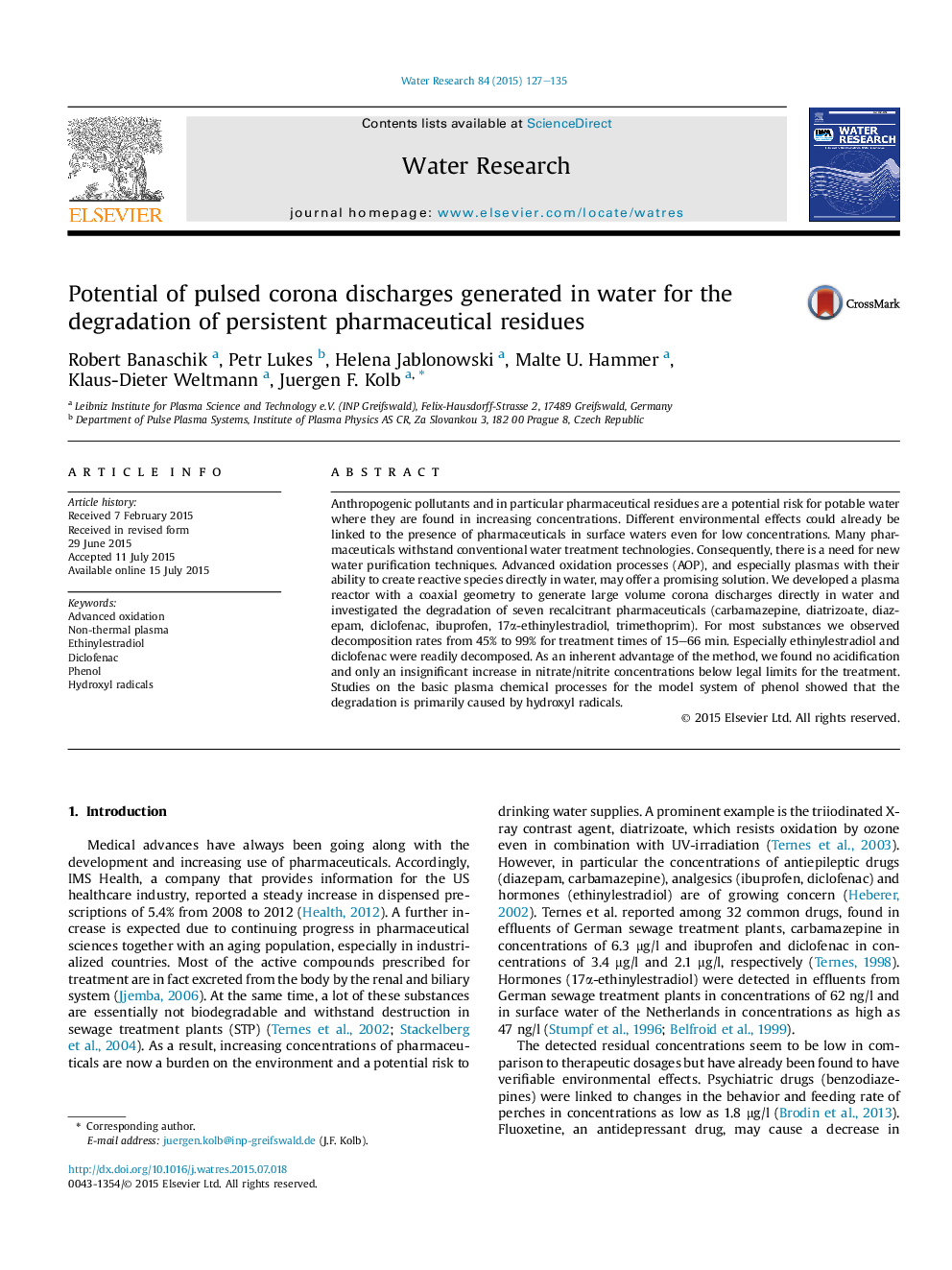| Article ID | Journal | Published Year | Pages | File Type |
|---|---|---|---|---|
| 4481080 | Water Research | 2015 | 9 Pages |
•Generation of a discharge plasma directly in water to treat large volumes.•Degradation of 7 problematic pharmaceuticals by 45%–99%.•Degradation of diclofenac and ethinylestradiol by more than 95%.•No acidification and only insignificant nitrification by the plasma treatment.
Anthropogenic pollutants and in particular pharmaceutical residues are a potential risk for potable water where they are found in increasing concentrations. Different environmental effects could already be linked to the presence of pharmaceuticals in surface waters even for low concentrations. Many pharmaceuticals withstand conventional water treatment technologies. Consequently, there is a need for new water purification techniques. Advanced oxidation processes (AOP), and especially plasmas with their ability to create reactive species directly in water, may offer a promising solution. We developed a plasma reactor with a coaxial geometry to generate large volume corona discharges directly in water and investigated the degradation of seven recalcitrant pharmaceuticals (carbamazepine, diatrizoate, diazepam, diclofenac, ibuprofen, 17α-ethinylestradiol, trimethoprim). For most substances we observed decomposition rates from 45% to 99% for treatment times of 15–66 min. Especially ethinylestradiol and diclofenac were readily decomposed. As an inherent advantage of the method, we found no acidification and only an insignificant increase in nitrate/nitrite concentrations below legal limits for the treatment. Studies on the basic plasma chemical processes for the model system of phenol showed that the degradation is primarily caused by hydroxyl radicals.
Graphical abstractFigure optionsDownload full-size imageDownload high-quality image (142 K)Download as PowerPoint slide
